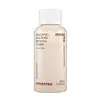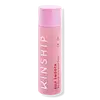What's inside
What's inside
 Key Ingredients
Key Ingredients

 Benefits
Benefits

 Concerns
Concerns

 Ingredients Side-by-side
Ingredients Side-by-side

Water
Skin ConditioningPropanediol
Solvent1,2-Hexanediol
Skin ConditioningArginine
MaskingGluconolactone
Skin ConditioningSilica
AbrasiveLithium Magnesium Sodium Silicate
AbsorbentCaprylyl Glycol
EmollientEthylhexylglycerin
Skin ConditioningCalcium Chloride
AstringentSodium Metaphosphate
BufferingVolcanic Ash
AbrasiveLactic Acid/Glycolic Acid Copolymer
Skin ConditioningPolyquaternium-10
Tocopherol
AntioxidantWater
Skin ConditioningGlycolic Acid
BufferingGlycerin
HumectantCaprylic/Capric Triglyceride
MaskingSodium Hydroxide
BufferingFragaria Vesca Fruit Extract
AstringentAvena Sativa Seed Extract
Skin ConditioningLactobacillus Ferment
Skin ConditioningJojoba Esters
EmollientPolyglyceryl-6 Caprylate
EmulsifyingPolyglyceryl-3 Cocoate
EmulsifyingPolyglyceryl-4 Caprate
EmulsifyingPolyglyceryl-6 Ricinoleate
EmulsifyingRubus Fruticosus Fruit Extract
AstringentRubus Occidentalis Fruit Extract
AstringentPyrus Malus Fruit Extract
Skin ConditioningSodium Hyaluronate
HumectantAnanas Sativus Fruit Extract
Skin ConditioningArginine
MaskingCaprylyl Glycol
EmollientIsopropyl Jojobate
EmollientAllantoin
Skin ConditioningTocopherol
AntioxidantPanthenol
Skin ConditioningSodium Acrylates Copolymer
Ethylhexylglycerin
Skin ConditioningHexylene Glycol
EmulsifyingLecithin
EmollientDecyl Glucoside
CleansingSilica
AbrasiveBisabolol
MaskingLauryl Glucoside
CleansingPotassium Sorbate
PreservativeSodium Benzoate
MaskingCitric Acid
BufferingPhenoxyethanol
PreservativeOctyldodecanol
EmollientXanthan Gum
EmulsifyingCI 77891
Cosmetic ColorantMica
Cosmetic ColorantCI 77491
Cosmetic ColorantWater, Glycolic Acid, Glycerin, Caprylic/Capric Triglyceride, Sodium Hydroxide, Fragaria Vesca Fruit Extract, Avena Sativa Seed Extract, Lactobacillus Ferment, Jojoba Esters, Polyglyceryl-6 Caprylate, Polyglyceryl-3 Cocoate, Polyglyceryl-4 Caprate, Polyglyceryl-6 Ricinoleate, Rubus Fruticosus Fruit Extract, Rubus Occidentalis Fruit Extract, Pyrus Malus Fruit Extract, Sodium Hyaluronate, Ananas Sativus Fruit Extract, Arginine, Caprylyl Glycol, Isopropyl Jojobate, Allantoin, Tocopherol, Panthenol, Sodium Acrylates Copolymer, Ethylhexylglycerin, Hexylene Glycol, Lecithin, Decyl Glucoside, Silica, Bisabolol, Lauryl Glucoside, Potassium Sorbate, Sodium Benzoate, Citric Acid, Phenoxyethanol, Octyldodecanol, Xanthan Gum, CI 77891, Mica, CI 77491
Ingredients Explained
These ingredients are found in both products.
Ingredients higher up in an ingredient list are typically present in a larger amount.
Arginine is an amino acid that is important for human development. Your body uses is it to produce hair keratin and skin collagen.
As a cosmetic ingredient, Arginine has antioxidant properties and can also help repair damaged skin. This ingredient is derived either synthetically or from animals.
Arginine isn't fungal acne safe when used in the presence of other lipids (fats, fatty acids, oils, esters, etc). Oils and fats occur naturally within the skin, so take caution when using Arginine if you're prone to fungal acne.
Learn more about ArginineCaprylyl Glycol is a humectant and emollient, meaning it attracts and preserves moisture.
It is a common ingredient in many products, especially those designed to hydrate skin. The primary benefits are retaining moisture, skin softening, and promoting a healthy skin barrier.
Though Caprylyl Glycol is an alcohol derived from fatty acids, it is not the kind that can dry out skin.
This ingredient is also used as a preservative to extend the life of products. It has slight antimicrobial properties.
Learn more about Caprylyl GlycolEthylhexylglycerin (we can't pronounce this either) is commonly used as a preservative and skin softener. It is derived from glyceryl.
You might see Ethylhexylglycerin often paired with other preservatives such as phenoxyethanol. Ethylhexylglycerin has been found to increase the effectiveness of these other preservatives.
Silica, also known as silicon dioxide, is a naturally occurring mineral. It is used as a fine, spherical, and porous powder in cosmetics.
Though it has exfoliant properties, the function of silica varies depending on the product.
The unique structure of silica enhances the spreadability and adds smoothness, making it a great texture enhancer.
It is also used as an active carrier, emulsifier, and mattifier due to its ability to absorb excess oil.
In some products, tiny microneedles called spicules are made from silica or hydrolyzed sponge. When you rub them in, they lightly polish away dead skin layers and enhance the penetration of active ingredients.
Learn more about SilicaTocopherol (also known as Vitamin E) is a common antioxidant used to help protect the skin from free-radicals and strengthen the skin barrier. It's also fat soluble - this means our skin is great at absorbing it.
Vitamin E also helps keep your natural skin lipids healthy. Your lipid skin barrier naturally consists of lipids, ceramides, and fatty acids. Vitamin E offers extra protection for your skin’s lipid barrier, keeping your skin healthy and nourished.
Another benefit is a bit of UV protection. Vitamin E helps reduce the damage caused by UVB rays. (It should not replace your sunscreen). Combining it with Vitamin C can decrease sunburned cells and hyperpigmentation after UV exposure.
You might have noticed Vitamin E + C often paired together. This is because it is great at stabilizing Vitamin C. Using the two together helps increase the effectiveness of both ingredients.
There are often claims that Vitamin E can reduce/prevent scarring, but these claims haven't been confirmed by scientific research.
Learn more about TocopherolWater. It's the most common cosmetic ingredient of all. You'll usually see it at the top of ingredient lists, meaning that it makes up the largest part of the product.
So why is it so popular? Water most often acts as a solvent - this means that it helps dissolve other ingredients into the formulation.
You'll also recognize water as that liquid we all need to stay alive. If you see this, drink a glass of water. Stay hydrated!
Learn more about Water